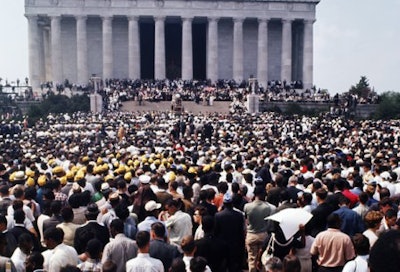
Frank Bond, a broadcast journalist and producer at the Newseum, recalled that there was great anxiety and fear among the media and John F. Kennedy’s administration that the march would turn violent.
“Everyone wanted to know, ‘Is there going to be a blood bath on the mall,” said Bond, who noted that most of the White daily newspapers noted in their coverage that the event went off without incident while most of the Black weeklies were upbeat by the events of that day.
Although the march has largely been associated with the “I Have a Dream” speech delivered by Dr. Martin Luther King Jr., he was not the only speaker to address the 250,000 people who assembled at the Lincoln memorial that sweltering, hot August day.
Dr. Kirt Wilson, an associate professor of communication arts and sciences at Pennsylvania State University, pointed out that there were 10 speakers—including John Lewis and A. Philip Randolph—who stirred the crowd that day. Still, the retelling of that day often begins and ends with King’s speech. That’s unfortunate said Dr. Carole Blair, who noted that the march and the overall Civil Rights Movement involved the individual sacrifices made by “obscure ordinary people.”
Richard Prince remembers the march. He was a senior in high school when he and his family traveled by bus from Long Island to attend. And though he left before King delivered his speech, Prince said there were some early concerns by the organizers that more Whites than Blacks would show up at the event.
“Black journalists talk about feeling a great pride from covering the event,” said Prince, who writes a blog about diversity issues. In the years since the march, he noted that some mainstream White publications that advanced a “southern White point of view” have since apologized for their slanted coverage or their decision, in some instances, not to cover the march or the Civil Rights Movement at all.















